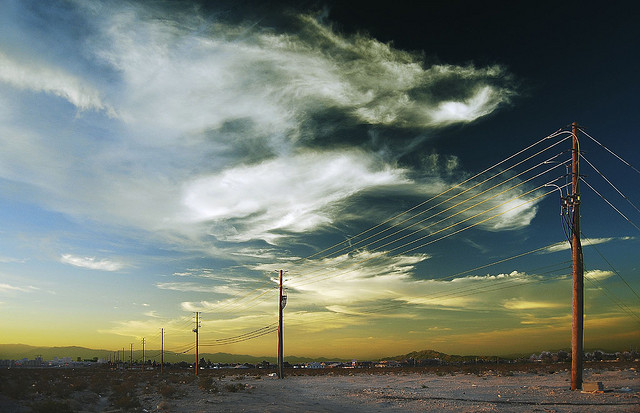Maintaining a right-of-way for public access or utility companies is the duty of the land owner. Users of the property must also exercise due care restoring the land to its original state if damaged. Responsible parties should understand the elements of maintenance required, and the precautions they can take to avoid the harmful effects of soil erosion on their access-land.
The Commissioners of Stephens County in Oklahoma recently took action to guard against erosion in a local right-of-way. They facilitated cooperation between the land owner and the county in the clearing of ditches and trees—all in an effort to help reduce siltation and erosion of the right-of-way.
A right-of-way, also known as an easement, is a part of private land designated for use by a public utility, such as a road, railway, or power line. Navigable rivers in the USA are also deemed public rights-of-way.
Easements in particular usually require maintenance in the form of clearing of the land in order to accommodate the utility.
So Who Picks Up the Tab?
Land owners are responsible for complying with all applicable laws regarding the land they own, including property under use as a right-of-way.
In the case of public utilities, the utility company or government has the right to maintain the land as necessary for the continued operation of their service(s).
Power companies, for example, in most cases have the right to clear easements under power lines. This includes the clearing of trees, buildings, vegetation, and fire hazards, to allow the construction, operation, and rebuilding of transmission lines.
Erosion Prevention
In cases where damage is caused to the easement, such as erosion of the land, it must be rectified by the utility company or the user of the easement that initially caused the damage.
Generally, easements require clearing to the extent that makes them easily accessible to the public and/or allows the utility company to maintain their services safely and effectively. Such clearing can involve the permanent removal of trees from an area.
This removal process however loosens topsoil as well as undersoil allowing increased wind speeds to blow soil away. The most important factor in preventing erosion is ground-cover, and bare land must be seeded to avoid excessive erosion, especially in wet climates.
Hydro-seeding solutions like those offered by Midwest Industrial Supply, Inc. are an optimal method of providing quick ground-cover to bare land, and such measures are necessary to restore the condition of the land to a favorable state after it has been cleared of obstructions.
Roads
Roads are the most common right-of-way. The responsibility of land owners who have roads running through their properties extend from keeping its surface clean from debris to keeping the area clear from obstructions as far as the boundaries to the right-of-way extend.
In the case of gravel roads, a suitable surface must be in place to prevent excessive runoff and dust. A coating such as those provided by Midwest‘s Soil Sement product achieves the desired effect on a gravel road surface, offering natural paving to stabilize the road.
Power Lines
Above-ground power lines require land that is free from obstructions that could potentially cause shorts and fires. This means that tall trees and shrubs must be pruned or removed, creating the potential for increased erosion and a need to manage it.
Organizations Promoting a Healthy Environment
The Arbor Day Foundation runs a program called Tree Line USA® that “protects and enhances the urban forest” by promoting awareness of how trees and utilities can coexist. Compliance with program standards enable a utility company to apply for membership to Tree City USA and become a part of a community that promotes tree health and preservation.
The five core standards maintained by the program include: quality tree care, annual worker training, tree planting and public education, tree-based energy conservation, and Arbor Day celebrations to raise awareness for the cause.
Laws Governing Rights-of-Way
Federal laws on land use, which take into account both national and local regulations, are governed by United States Code, Title 43 , Chapters 22 (Rights-of-Way and Other Easements in Public Lands) and Chapter 35 (Federal Land Policy and Management).
Always check your local and state regulations before taking any action relating to a public right-of-way.


